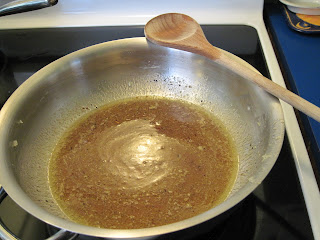 |
| Dad and me in much younger years. |
I always knew my father would die young due to his heavy cigarette smoking, excessive alcohol intake in his younger years and dietary choices but he managed to almost make it to the age of 73. He had been in the hospital several times over the last few years with serious cases of pneumonia. I was pretty sure that he would die from complications of emphysema.
However, in May my father became jaundiced and a stent was put in his bile duct. The doctors were not sure what was going on, possibly pancreatic cancer. Because of his weak lungs, they could not do exploratory surgery without risking his life. My father decide to “go home and live the rest of his life”.
 |
| After a fall. |
For someone who is a physician, with a very large extended family, I haven’t been exposed to death all that often. I have been so lucky. My Dad is the first person so close to me that has died. I know as I get older that this experience will become more and more frequent.
Anyone that has known me the last 15 years or so also knows my cat Stretch. (His picture is part of the header of the blog.) He is a very personable kitty and is the first pet I’ve had that got under my skin and feels like a being with a person. Stretch is at least 18 years old and perhaps older. This last year or so he has been getting thinner and his hip pain seems increased. He acts just a bit senile and just isn’t the same being as when he was younger. I really miss the younger him but try to enjoy him now too, despite the decreased camaraderie and extra work taking care of him entails these days. My husband and I are already grieving our loss of him, even though he isn’t gone yet.
 |
| Stretch thinks he's a person! |
I would never confuse my cat with my Dad, but I feel like there are some similarities in these situations. Being able to care for someone you love as they experience decline in their health and then their eventual passing is quite tiring and frustrating. But there is also something good there. I’ve looked all over the Internet to try to help explain what I feel about this, but can’t find it. I guess even though taking care of someone that is nearing death is often tiring and frustrating, being able to care for them and hopefully make the experience less traumatic for them is such a caring, human thing that it can bring spiritual growth.
 |
| "I love you this much!" or "I once caught a fish this big! |
It is 3 months since my Dad passed away and I’m still going through some of the stages of grief. I miss my Dad. I miss the thought of him going fishing, discussing biblical theories, even chain-smoking the damn cigarettes. If you have the chance to take care of someone close to you nearing the end of life, don’t be afraid. Do it! One should always listen to the person, help them feel comfortable and keep their dignity. Help them maintain independence in their daily life as long as possible. You’ll be sad at the end, but glad you did it.


















